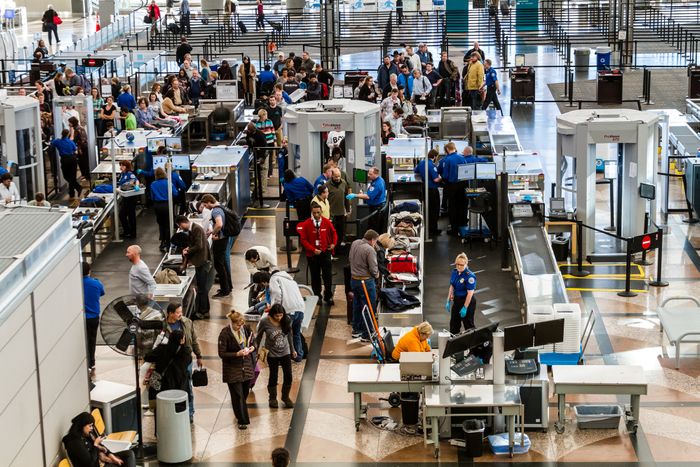In a world increasingly aware of the potential for terrorism and other security threats, airports represent critical points of vulnerability. The sheer volume of passengers and luggage transported daily makes comprehensive security measures essential. Among various security technologies employed, airport baggage x-ray machines play a pivotal role in ensuring safety and enhancing the overall efficacy of airport security protocols. As incidents of baggage-related threats continue to emerge, the need for advanced detection technologies has never been more pressing.
The Evolution of Baggage Screening Technology
Baggage screening has come a long way since the early days of airport security. Initially, the focus was on metal detectors and manual inspections. However, the rise in global air travel and the need for more sophisticated security measures led to the development of advanced baggage x-ray machines. These machines utilize high-energy radiation to produce images of the contents of bags, allowing security personnel to detect a wide range of prohibited items, including explosives, weapons, and illegal substances.
The technology behind baggage x-ray machines has evolved significantly over the years. Modern machines are equipped with advanced imaging systems that can differentiate materials based on their density and atomic number. This capability allows security personnel to identify potential threats more accurately and efficiently. Dual-energy and multi-energy x-ray systems are particularly noteworthy, as they generate images in multiple colors that correspond to different materials, making the identification process easier and faster.
How Baggage X-Ray Machines Operate
The operation of an airport baggage x-ray machine is based on the principles of radiation. When a bag is placed on the conveyor belt, it passes through a tunnel where x-ray beams are emitted. These beams penetrate the baggage, and the varying densities of the items within produce distinct images on the machine’s screen. Security personnel can interpret these images to identify potential threats.
X-ray machines are capable of detecting a variety of materials, from organic substances like food and liquids to inorganic materials such as metals and plastics. This versatility makes them indispensable in the airport security landscape. Moreover, the high-speed processing capabilities of modern machines allow for rapid screening of bags, ensuring minimal delays for passengers while maintaining a high level of safety.
Integrating Artificial Intelligence and Machine Learning
The integration of artificial intelligence (AI) and machine learning (ML) into baggage x-ray systems represents a significant advancement in airport security technology. AI algorithms can analyze the x-ray images and automatically flag items of concern for further inspection, reducing the workload on human operators. This technology not only enhances the accuracy of threat detection but also speeds up the overall screening process.
Machine learning models can be trained on vast datasets of images to recognize patterns associated with various prohibited items. As these models learn and improve over time, they become more adept at identifying potential threats, thereby increasing the efficiency of airport security operations. By minimizing human error and accelerating the screening process, AI-enhanced baggage x-ray machines are revolutionizing how security personnel approach their vital responsibilities.
The Human Element in Security Screening
While technology plays a crucial role in enhancing airport security, the human element remains indispensable. Security personnel are trained to interpret x-ray images accurately and to make informed decisions based on their observations. The training process includes understanding the limitations of the technology, recognizing false positives, and knowing when to conduct a manual inspection.
Human intelligence and judgment complement the capabilities of baggage x-ray machines. Security personnel can assess the context of the situation, interact with passengers, and evaluate behavioral indicators that may signal a potential threat. The combination of cutting-edge technology and human vigilance creates a robust security framework that addresses the evolving tactics of those who seek to exploit vulnerabilities in airport security systems.
Challenges and Future Developments
Despite the advancements in baggage x-ray technology, challenges remain. One significant issue is the need for constant updates and maintenance of the machines to ensure they operate effectively. As new types of threats emerge, so too must the technology adapt to detect them. This requires ongoing investment in research and development to enhance detection capabilities and improve the user experience for both security personnel and passengers.
Moreover, the balance between security and passenger convenience is a delicate one. As security protocols become more stringent, travelers may experience longer wait times and increased scrutiny of their baggage. Airports must strive to implement technologies that not only enhance security but also streamline the travel experience. Innovations such as automated screening lanes, advanced imaging technologies, and better data sharing between agencies can help to address this challenge.
The Role of Regulatory Standards
Regulatory agencies, such as the Transportation Security Administration (TSA) in the United States and the European Union Aviation Safety Agency (EASA), play a crucial role in setting standards and guidelines for baggage screening technologies. These agencies establish requirements for the performance and reliability of baggage x-ray machines, ensuring that they meet specific security benchmarks.
Compliance with these regulations is vital for maintaining the safety and security of air travel. As new technologies are developed, regulatory bodies must continue to adapt and update their standards to incorporate advancements and address emerging threats. Collaboration between technology manufacturers, airport authorities, and regulatory agencies is essential for fostering innovation while ensuring security remains paramount.
In summary, the role of baggage x-ray machines in enhancing airport security cannot be overstated. As technology continues to evolve, the integration of AI and machine learning will further optimize the efficacy of these systems. Coupled with the essential human element of security personnel, this technology forms a vital line of defense against potential threats in the ever-changing landscape of air travel.

Leave a Comment












